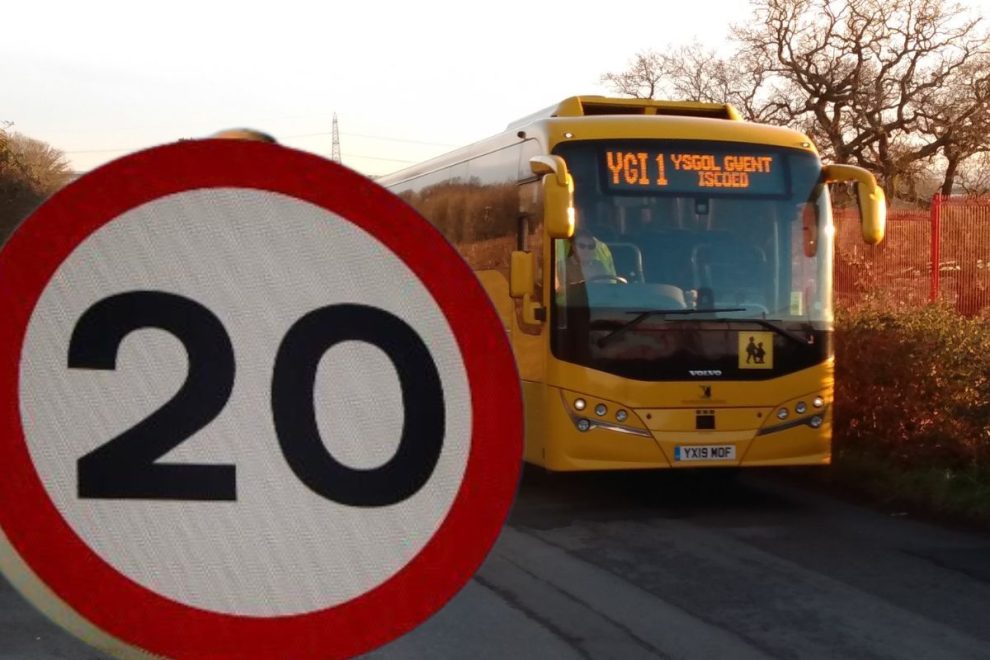DRIVERS across Wales will be easing their feet from their accelerator this weekend as the country adapts to a lower speed limit – but in parts of Gwent the new limit is old news.
The 20 mile per hour limit was piloted in eight areas across Wales from 2021 which saw the lower limit introduced in Severnside, including Magor and Caldicot, and Abergavenny in Monmouthshire from May that year.
This Sunday, September 17 will see one of the most significant changes in road traffic legislation in living memory as 20mph becomes the default speed limit for restricted roads. In effect that will mean in built up areas where a driver sees a road with street lighting no more than 200 yards apart they should assume the lower limit applies rather than what will become the old default limit of 30mph, that had been standard since the 1930s.
“It’s taking motorists back to 1903, we’re just going backwards,” is the view of Giles Davies an independent councillor on Torfaen Borough Council who is believes, from talking with people in his Abersychan ward near Pontypool, there is a majority opposed to the new limit. A recent poll for ITV Wales showed 66 per cent oppose the limit and just 31 in favour.
In Abergavenny local Conservative councillor Maureen Powell said: “I think people have got used to it.”

The Conservative Party have been leading the charge against the policy, and were unsuccessful in an attempt, in the Senedd this week, to get the government to abandon the plan.
But Cllr Powell, whose Pen y Fal ward includes one of the main roads into Abergavenny town centre that formed part of the trial area, said she is a supporter: “Most people I speak to seem happy enough with it and by the way people drive they have seemed to get used to it.”
However there is a but: “My concern is the fact it has cost so much money to do it when we are desperate for money for doctors, nurses and teachers. I think this is why the Conservatives are against it.
“I’m not against 20mph but the cost of doing it.”
Cost has proved contentious. The Welsh Government has allocated more than £34 million to councils, including English border authorities Herefordshire and Gloucestershire, to pay for new signs and road markings, but this is a one-off capital cost which won’t need to be repeated year on year.
Councils are also having to pay for traffic orders for new speed limits including exemptions, where 30 mph will remain the limit, or buffer zones between different limits.
Bizarrely orders are also needed to overturn existing 20mph zones, introduced as special measures in residential areas, and restore standard “restricted roads” where 20mph will be the default limit. There are 83 locations in Torfaen alone where this is happening.
The Welsh Government’s own assessment is the economic impact could be £6.4 billion over the next 30 years. This blunt estimate is based on increased journey times for individuals and businesses so doesn’t generate any additional cash for the government to spend. Wales’ GDP, the measure used to value an economy, was estimated at £79.7bn in 2021.
The same economic assessment also shows over 30 years a potential £1.4 bn in economic benefits due to a reduction of between 40 and 440 deaths and drop in serious injuries of between 1,800 and 3,900 and savings of up to £57m for emergency services and hospitals.
Cllr Giles Davies agrees with his Tory counterpart from Abergavenny on the cost of the scheme and though he was a Labour councillor at the time of the Senedd elections in 2021 he disputes his former party has a mandate to introduce the change.

“The manifesto actually said it was for “residential areas” and that could be taken both ways and more for estates not roads that are a 30mph limit,” argued the councillor who also said he was concerned the limit will cause confusion and that some roads in his semi-rural area will see sections subject to limits of 20, 30 and 40 mph.
“You’ll not know if you’re coming or going and spend most of your time looking at your speedomoter. Hopefully I’m wrong and everyone loves it when it comes in but there’s terrible opposition locally and I think they might get their fingers burnt.”
In Caldicot Labour councillor Tony Easson said he had lobbied for the 20mph limit and faced a “big battle” before the town to be included in the trial.

“Implementation has been a bit hap hazard,” said the Monmouthshire county councillor referring to revisions to the limit on the B4245 known as the Caldicot bypass, agreed in November last year, which saw the 30mph limit restored along certain sections.
“It’s the right decision to get as many roads down to 20mph as possible,” said the councillor but neither does he believe the lower limit is the cure all to road safety, including in his own area.
“The B4245, from Undy to Rogiet, needs a walking and cycle path so kids can ride along there, you see them riding that road and it makes my heart turn.”
While politicians and traffic engineers have spent at least the last two years looking and considering the impacts of the lower speed limits drivers and pedestrians will be able to judge for themselves from Sunday wherever they are in Wales.



















